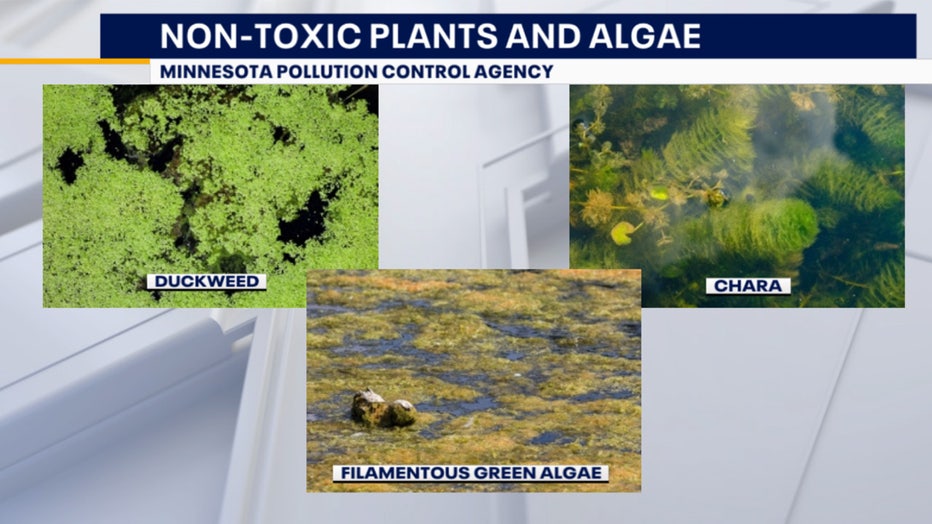Pollution control officials work to slow spread of algae
BLOOMINGTON, Minn. (FOX 9) - State officials are warning locals about the risks of blue-green algae in some bodies of water as many flock to Minnesota lakes to beat the seasonal heat.
The nine-mile creek watershed district and the City of Bloomington launched a water quality improvement project to reduce the amount of phosphorus in the lake, which is what fuels the growth of blue-green algae.
An expert with the Minnesota Pollution Control Agency (MPCA) says it’s important to be aware of the risks and what to do if you come into contact with this type of bacteria.
"If toxins are present at all, and then if they are, what is the level?" said MPCA Water Quality Monitoring Supervisor Lee Engel. "That's why we refer back to the ‘When in doubt, stay out.’ If you visually see this stuff, it's a better choice to maybe choose to recreate at a different lake, where you're not seeing these conditions, or to maybe find something different to do for the day."
Exposure to high levels of blue-green algae can lead to diarrhea, nausea or vomiting, skin, eye or throat irritation and allergic reaction or breathing difficulties for some. If someone experiences these symptoms, they are encouraged to reach out to the Minnesota Department of Health.
Anyone who swallows water with this bacteria has the highest chance of getting sick.
Blue-green algae can be found anywhere in a body of water, but it's often found on the downwind side of a lake or in a secluded bay or shoreline.
It's usually harmful when the water temperatures are higher than 75 degrees.
It's also important to note not all algae are harmful. Below are some photos of common plants and algal blooms you may see in Minnesota lakes and ponds, including duckweed, chara and filamentous green algae, none of which will hurt you.

Non-toxic plants and algae. (FOX 9)
However, these plants and blooms can still get in the way of a nice day on the water.
To spot blue-green algae, look for blooms that look like pea soup or spilled green paint. It also may have a swampy green odor.
Anyone who sees algae growing on bodies of water in the Twin Cities can also report it through the EPA's bloomWatch app.

